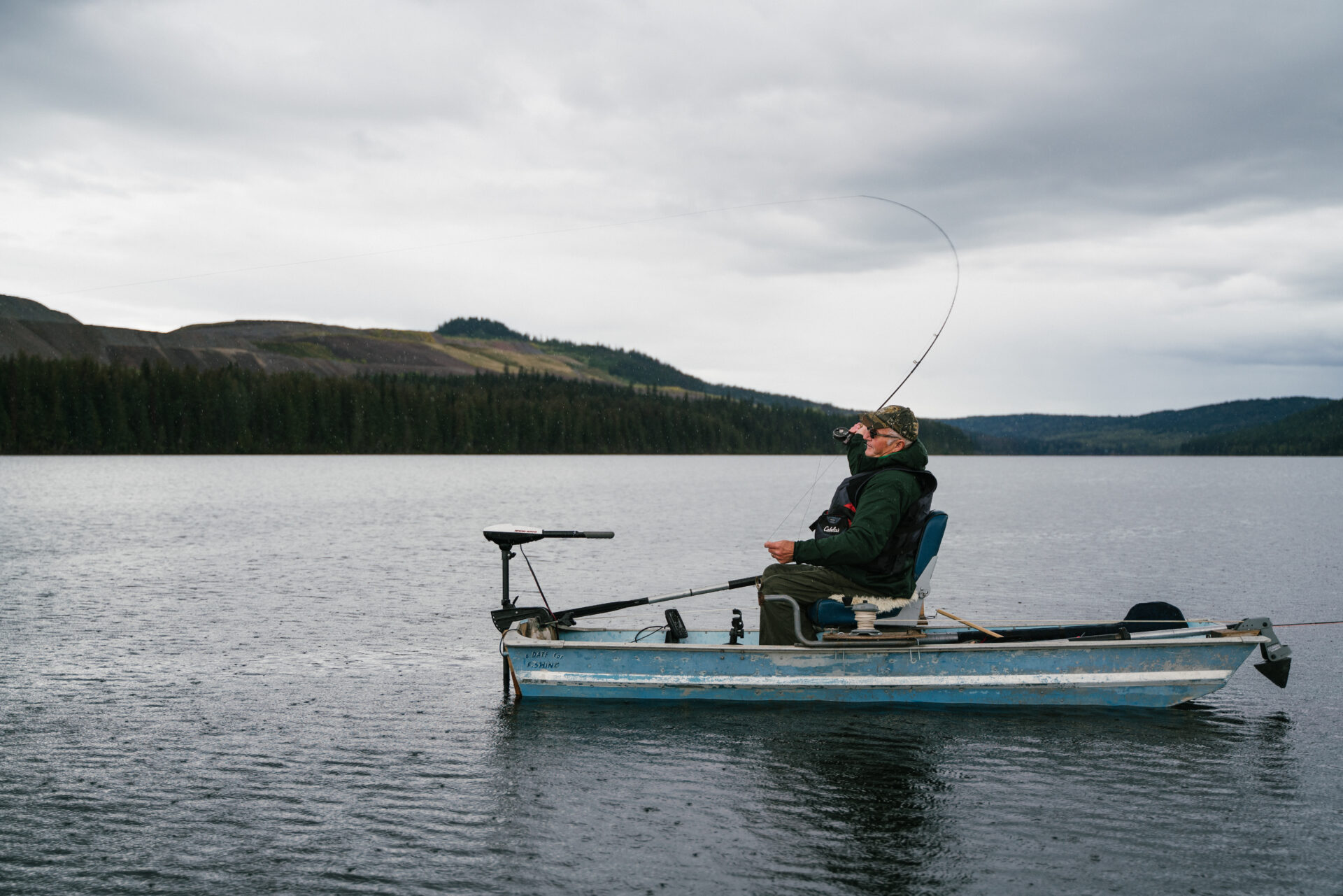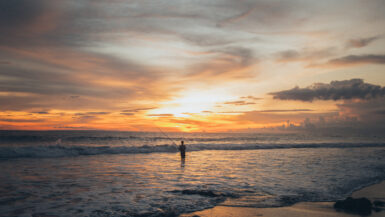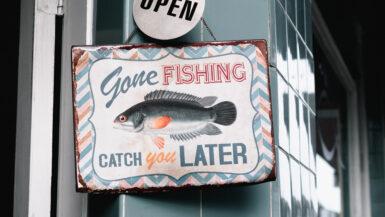Fishing in streams and creeks is an incredibly rewarding experience. Not only does it provide anglers with the opportunity to explore some of the most remote, picturesque areas of the United States, but it also yields a variety of freshwater fish species. Whether you’re an experienced angler looking to break away from your local lakes, or a beginner looking to make your first cast, fishing in streams and creeks can be an enjoyable and rewarding activity. This guide is designed to provide anglers with an introduction to stream and creek fishing, covering everything from the different species of fish that can be found, to the best equipment and techniques for catching them.
Basic Gear Needed
Stream fishing is an invigorating experience, but it can also be quite challenging. To make sure you have a successful day fishing and can take advantage of the many benefits stream fishing has to offer, you’ll need to ensure you have all the essential gear to get the job done. This guide will provide an overview of the basic gear you need for freshwater angling in streams and creeks.
Rod and Reel Setup
A rod and reel setup is a must-have item for stream fishing. When deciding on a rod and reel setup, the most important factor is the size — the length and type of rod should be determined by the type of fish and stream you’re fishing in. Generally, light spinning rods tend to be a good choice for stream fishing. As for the type of reel to use, spinning reels are highly recommended for beginners due to their ease of use.
Fishing Line
The type of fishing line you’ll need will depend on the size and type of fish you’re fishing for. Monofilament line is the most common type of fishing line used for stream fishing, as it’s lightweight and can easily be casted in tight spaces. However, if you’re targeting large fish, you may want to opt for a heavier fishing line. Always make sure to check the maximum pound test of your line to ensure it’s suitable for the type of fish you’re targeting.
Lures and Baits
Lures and baits are essential for successful stream fishing. The type of lures and baits you should use will depend on what type of fish you’re targeting. Generally, you should use small lures and baits, as most fish in streams are smaller in size. Some of the most popular lures and baits for stream fishing include crankbaits, spinners, bladed jigs, soft plastics and even live bait.
Hooks, Swivels and Weights
In addition to lures and baits, you’ll also need to make sure you have the necessary hooks, swivels and weights. Hooks, of course, are the most important component, as they are what will actually snag the fish. Swivels are important for preventing line twist, and weights are used to ensure that your lure or bait is able to sink to the bottom of the stream.
Other Accessories
Aside from the essential gear, there are a few other accessories that can come in handy when stream fishing. A good pair of polarized sunglasses will help you spot fish more easily, while a pair of waders can help you wade more comfortably in the stream. A waterproof bag can also be helpful for storing your gear.
Whether you’re a novice or a seasoned angler, having the right gear is essential for successful stream fishing. With the right setup and some practice, you’ll soon be catching fish like a pro.
Fishing Regulations
When fishing in streams and creeks, anglers should always be aware of their surroundings to ensure their safety. Wading in moving water can be hazardous, so appropriate precautions should always be taken. Before fishing, anglers should check local regulations and follow posted signs or warnings to ensure they remain within the law. It is also important to dress for the weather and wear appropriate footwear for the terrain.
Required Fishing Gear and Supplies
When fishing in streams and creeks, anglers should make sure they carry the necessary gear and supplies. Fishing licenses should always be in the possession of the angler, and a tackle box, long-handled net, and other useful gear should also be carried. Some anglers opt to use a landing net, or a fly-fishing net for catching larger fish. A pair of polarized sunglasses can help anglers spot fish below the surface of the water, while a hat and sunblock can help protect the angler from the sun’s rays.
Rules and Regulations to Follow
Following the local regulations and laws is essential when fishing in streams and creeks. Many areas have regulations regarding the size and number of fish that can be kept, as well as regulations concerning fishing during certain times of the year. Catch-and-release fishing is often encouraged in areas where populations of fish are low. Additionally, many areas have specific regulations concerning the use of bait or artificial lures, so anglers should always check the regulations beforehand.
Understanding the Habitats
In order to enjoy a successful fishing trip, anglers should understand the habitats in which they are fishing. Different species of fish will inhabit different areas of the stream or creek. Knowing the type of habitat that is home to a particular species can help anglers know where to look for them. Additionally, understanding the water temperature, current, and other conditions of the water can be useful for locating certain types of fish.
Tips to Improve Your Fishing Skills
Successful fishing in streams and creeks requires both knowledge and practice. Learning the proper techniques for casting and retrieving lures or bait can help greatly increase the number of fish caught. Watching the behavior of fish can also provide anglers with clues as to what type of bait or lure is likely to be successful. Being prepared with appropriate gear and lures and following local regulations can help anglers maximize their fishing success.
Choosing the Right Location
When fishing in streams and creeks, it’s important to know where to look for the most productive spots. One of the best ways to find the perfect location is to do some research. Look for maps of the area, talk to local anglers, and read up on local regulations and restrictions.
Understanding Local Regulations
Before heading out fishing, make sure to read up on any local regulations that may affect the area. Different states, provinces, and counties may have different laws and restrictions in place, so it’s important to read up on these before fishing.
Identifying Ideal Areas
When looking for the ideal area to fish, anglers should look for areas with deeper water, slower currents, and plenty of cover such as rocks, vegetation, and submerged logs. These areas are ideal for finding fish, as they provide shelter and food for the fish. In addition, look for areas with plenty of structure, such as drops, ledges, and pools. These areas are often the most productive when fishing streams and creeks.
Exploring Remote Areas
Many of the best freshwater fishing spots can be found in remote and isolated locations. Areas such as backwaters, ponds, and isolated creeks can often offer anglers some of the most productive fishing spots. Many of these locations may require hiking or canoeing to access, but the payoff can be worth it.
Checking the Weather
When fishing in streams and creeks, it’s important to take the weather into account. Weather can have a big impact on water levels, currents, and the fish’s behavior. Make sure to check the forecast before heading out to get an idea of what the conditions will be like.
Final Tips for Finding a Spot
When looking for the ideal location for fishing streams and creeks, anglers should consider the above factors and do their own research. Reading up on local regulations, identifying ideal areas, exploring remote spots, and checking the weather can help anglers find the best fishing spots.
Risks of Fishing in Streams and Creeks
Fishing in streams and creeks is a fun and exciting way to enjoy the outdoors, but there are some potential health hazards that you need to be aware of. The most common health risk is contamination from bacteria, viruses, and other harmful pollutants that can be found in streams and creeks. This contamination can cause bacterial and viral infections, as well as other illnesses.
Environmental Risks of Fishing in Streams and Creeks
In addition to the potential health risks of fishing in creeks and streams, there are also several environmental risks. These include the destruction of ecosystems, the introduction of invasive species, the spread of disease, and the disruption of the natural flow of water in the streams and creeks.
Biological Risks of Fishing in Streams and Creeks
Fishing in streams and creeks also poses some biological risks. Careless fishermen can cause damage to the natural environment by over-harvesting fish, or by using improper techniques like dragging nets or hooks. This can lead to the depletion of fish populations, as well as the disruption of the natural balance of the aquatic ecosystem.
Local Regulations and Restrictions
It is important to be aware of local regulations and restrictions before fishing in streams and creeks. Many streams and creeks are strictly regulated and require special licenses and permits. Even if the regulations are lax or non-existent, it is important to remember that you should always be respectful of the environment and follow all laws, rules, and regulations.
Safety Tips for Fishing in Streams and Creeks
Fishing in streams and creeks can be a safe and enjoyable experience if the proper safety precautions are taken. Pay attention to your surroundings and watch for obstacles, sharp objects, and other hazards that could pose a risk. Wear appropriate clothing and shoes, and be sure to bring a fully charged phone and emergency supplies in case of an accident. Additionally, always practice catch and release fishing, as it helps maintain the health of fish populations.
Practical Tips for Fishing in Streams and Creeks
When fishing in streams and creeks, location and conditions can play a major role in your success. Different types of fish will be found in different places depending on the stream’s geography, depth, temperature, and flow rate. You’ll need to do a bit of research to find out which species of fish are common in the waterway you’re targeting, and the best spots to cast your line.
Choose the Right Tackle and Bait
It’s important to select the right type of tackle and bait for the specific type of fish you’re targeting. Fishing for bass, for example, may require a different type of rod and reel than fishing for trout. Likewise, different types of bait may be better suited to different species of fish. You’ll want to make sure your tackle and bait are up to the task of catching the fish you’re after.
Seek Out Prime Fishing Spots
Streams and creeks are often home to prime fishing spots. Look for shallow areas with a mix of slow and fast-moving currents, eddies and pools. These spots are often where fish congregate. You’ll want to cast your line in these areas and let the bait drift in the current. You may also want to look for logs, rocks, or other types of structure in the water that could provide cover for the fish.
Use the Right Technique
Different techniques are needed to successfully fish in streams and creeks. You’ll want to use a slow and steady approach when casting your line to ensure that your bait drifts naturally in the current. You should also make sure to keep your rod tip low to feel the bite of the fish. And be sure to set the hook quickly when a fish takes the bait.
Be Prepared for Unexpected Obstacles
Fishing in streams and creeks can often present unexpected obstacles. Depending on the stream’s geography, you may need to traverse over logs and rocks or even climb up embankments. You’ll want to make sure you have the right gear and clothing so you can safely and comfortably access these areas. You should also keep an eye out for any hazardous wildlife or poisonous plants.
Know the Regulations and Etiquette
It’s important to familiarize yourself with the local regulations and fishing etiquette before you cast your line. In some areas, fishing licenses or permits may be required, and there may be specific limits on the number and size of the fish you can keep. You’ll also want to be mindful of other anglers and exercise good sportsmanship. All of these measures will help ensure that everyone can enjoy the outdoors safely and responsibly.
Types of Fish to Catch in Streams and Creeks
When fishing in streams and creeks, it is important to find the right areas to cast your line. Bodies of water in these environments tend to have areas of turbulence and slower-moving water. Turbulent and fast-moving areas tend to have more oxygenated water, which attracts more fish. Focus on areas where the water moves around obstacles like rocks and bends, as well as the areas in and around eddies, pools, or overhangs.
What Gear Do You Need for Fishing Streams and Creeks?
Most streams and creeks are relatively small and shallow, so lightweight fishing gear is best. Fly-fishing rods, spinning reels, and small tackle are ideal for these environments. It is also important to wear clothing and shoes that will not let your feet slip on wet rocks. A pair of waders or chest-high wading boots will keep you dry and warm.
Types of Fish to Catch in Streams and Creeks
The types of fish you can catch in streams and creeks can vary greatly depending on your location. Some common species caught in these freshwater environments include trout, bass, catfish, sunfish, crappie, shiners, and darters. When fishing for trout, your best bet is to look for areas of the stream with pools or overhangs. Bass can usually be found in the deeper pools, whereas catfish and sunfish are better hidden in the structure of the stream. Small minnows, worms, and bugs tend to be effective bait when fishing for any of these species.
The Joy of Fishing in Streams and Creeks
Fishing in streams and creeks can bring lots of joy to any freshwater angler. It’s an arena filled with opportunities to study and understand the regional ecosystem. Fish habitats can vary from slow moving pools, to fast moving riffles, to undercut banks, leaving space for anglers to explore and fish. Bait and lure can both be used to target fish, depending on the season and which species of fish you’re after. When fishing, it’s important to pay attention to the environment, movements of the fish, and the natural flow of the stream or creek. This will help you identify the best spots for casting your line. Ultimately, fishing in streams and creeks can be a rewarding and exciting experience for any freshwater angler.





Leave a reply